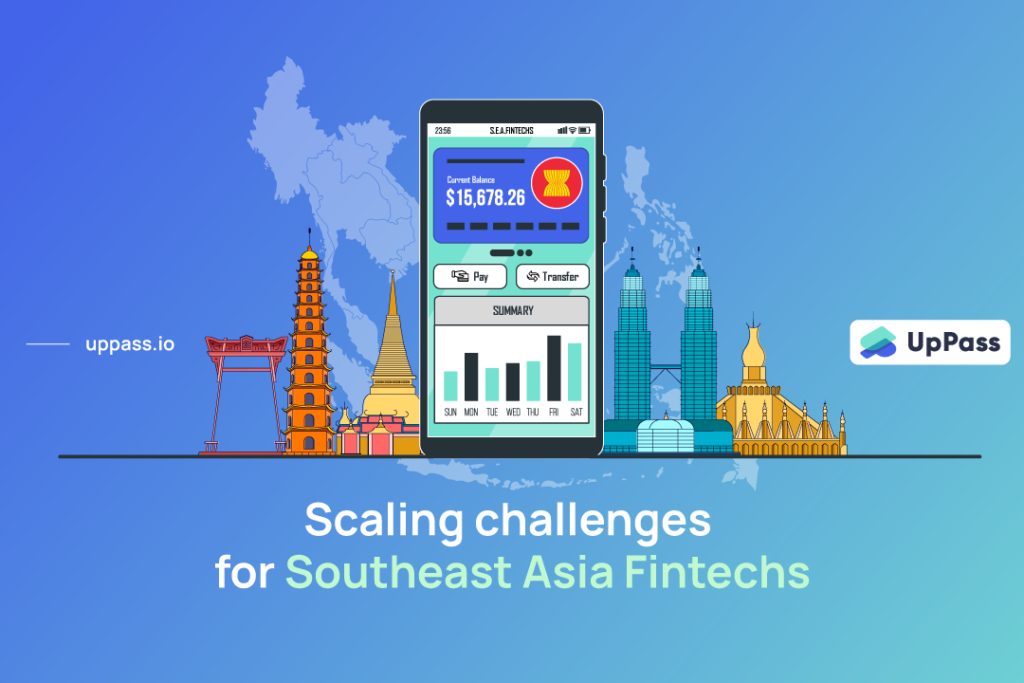
Scaling challenges for Southeast Asia Fintechs
Fintech, or financial technology, has been on the rise in Southeast Asia in recent years, with many companies looking to leverage the region’s growing economy and increasing reliance on technology to provide innovative financial services. With the rapid adoption of digital services and mobile applications, local micro finances and financial institutions as well as regional players need to look for a way to offer the digital channels a great user experience faster than ever.
Challenges
1) The scarcity in tech resources
The scarcity in tech resources can be a challenge for companies operating in Southeast Asia. The region has a rapidly growing tech industry, but the availability of skilled tech talent and infrastructure can be limited in some areas. Additionally, competition for tech resources can be intense, leading to higher costs and longer hiring processes. To overcome these challenges, companies may need to be creative in their recruitment and resource allocation strategies, such as outsourcing or training in-house talent. Or leverage No-code and Low-code tools in order to piece together the platform with specific software as a service (SaaS) that serves various application needs.
2) The Fragmentation of data sources and open banking
The Fragmentation of data sources and open banking can be a challenge in Southeast Asia, as the financial and banking sectors in the region are highly diverse and regulated by various authorities. The API (Application Programming Interface) of the data sources from the official authorities as well as the private local services platforms and utility networks are not up to par with those in European and US markets. In addition, in response to growing concerns about data privacy and rolling of PDPA in many countries, Google Play Store has tightened its Android Application approval process to limit the access for sensitive mobile devices data which are primarily used to detect fraud signals and alternative credit underwriting for the underbanked population.
3) The level of trust in giving out sensitive information
The level of trust in giving out sensitive information is not as high as in users in Western countries. This can be due to a variety of factors, including a lack of understanding about how the data will be used, concerns about data privacy and security, and past incidents of data breaches or misuse of personal information. Many startups tried to mimic the user experience of the Fintech application in America yet faced some resistance or high churn in the journey. Reading the information from official documents such as ID cards, passports, and utility bills using the OCR technology is more commonly used in conjunction with the APIs in order to provide comfort for the users to feel they are in control of the information and understand the boundaries they are giving out.
Tips to scale Fintech in Southeast Asia
If you’re a fintech company looking to scale your business in Southeast Asia, here are some tips on how to do it quickly and effectively
- Understand the local market: Southeast Asia is made up of a diverse group of countries with their own unique cultures, economies, and regulatory environments. It is important to thoroughly research the specific market you are targeting and understand the needs and preferences of local consumers.
- Partner with established financial institutions or local data providers: Many fintech companies in Southeast Asia choose to partner with established financial institutions in order to leverage their expertise, customer base, and regulatory compliance. This can be a valuable way to gain a foothold in the market and gain access to new customers.
- Focus on user experience: In the digital age, consumers in Southeast Asia expect a seamless and convenient experience when interacting with financial services. Make sure your fintech platform is easy to use, offers a wide range of features, and provides excellent customer support. By integrating the verification solutions that are in sync with your brand look and feel, users do not notice the switching or redirection in their sign-up journey.
- Prioritize data privacy and security: As mentioned earlier, there is often a lower level of trust when it comes to giving out sensitive information in Southeast Asia. It is critical to prioritize data privacy and security in order to build trust with customers and ensure the long-term success of your fintech business.
UpPass helps you navigate the localization hurdles and compliance as you scale your Fintech application.
Here are a few reasons why Fintech uses UpPass as they expand to new countries in Southeast Asia.
1) No-code builder
No-code builder to customize the identity verification and onboarding flows. Build a local onboarding flow with your brand in a local language within a few hours.
2) Localization of experience
Localization of experience and use cases, data sources, and services for data verification and fraud detection. UpPass provides the instant translation in the local language for the KYC forms and identity verification channels that are commonly used for each country in Southeast Asia.
3) Beyond the Biometrics verification
UpPass provides global support for basic biometrics verification such as Liveness Detection, ID Document Verification, and data extraction, Facial Identity Verification. Furthermore, UpPass continues to expand and connect to provide no-code access to local data sources and local platform APIs to make real-time decisions in many countries in Southeast Asia.
If you are interested to discuss how we can help or explore the solution, schedule the demo with us or start for free.
Read more articles at https://blog.uppass.io


